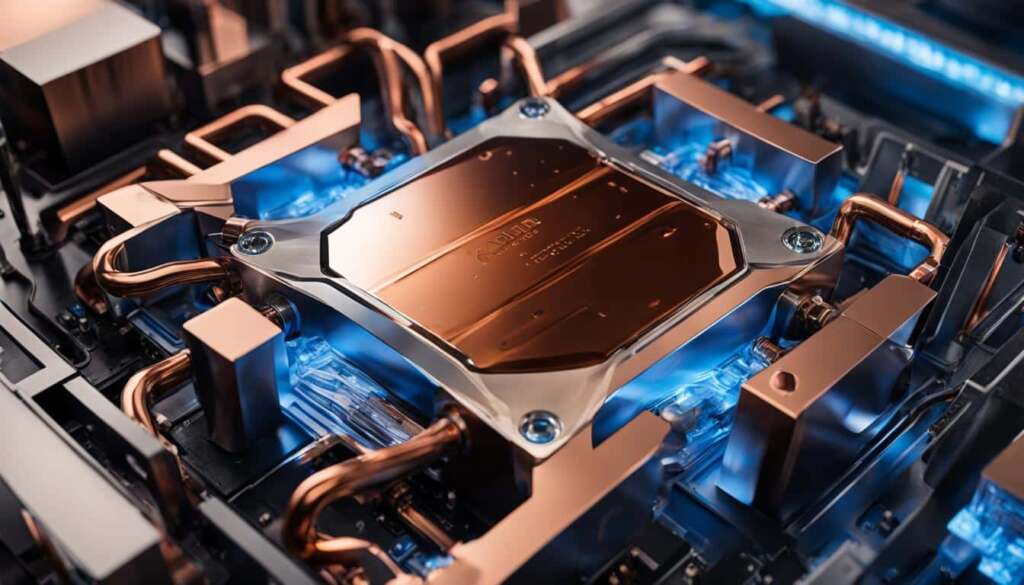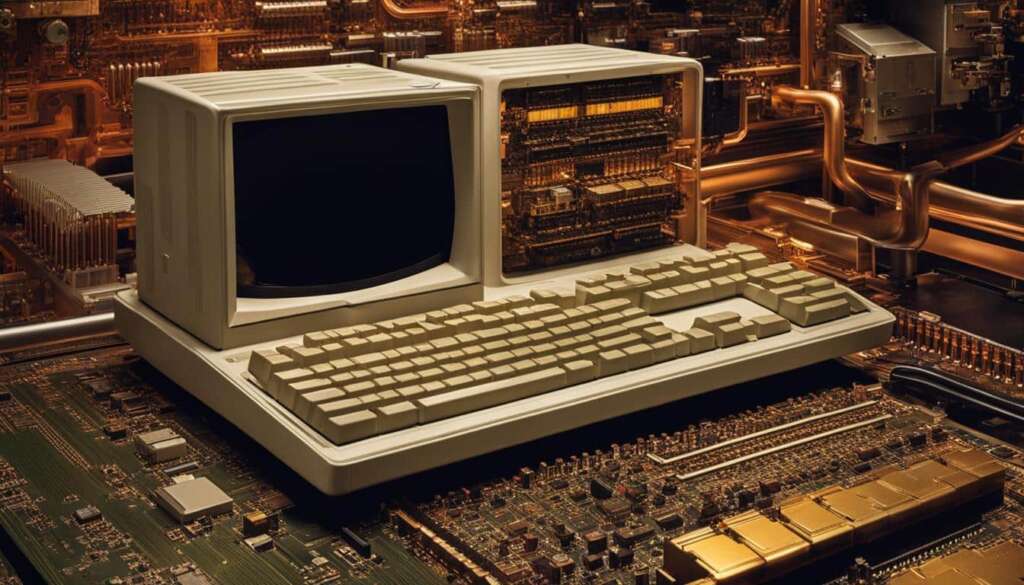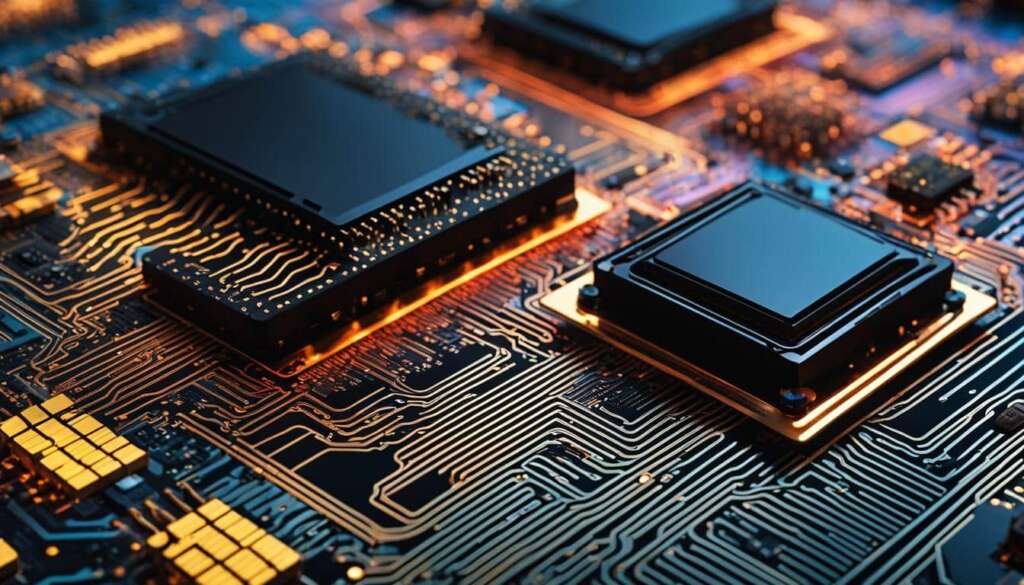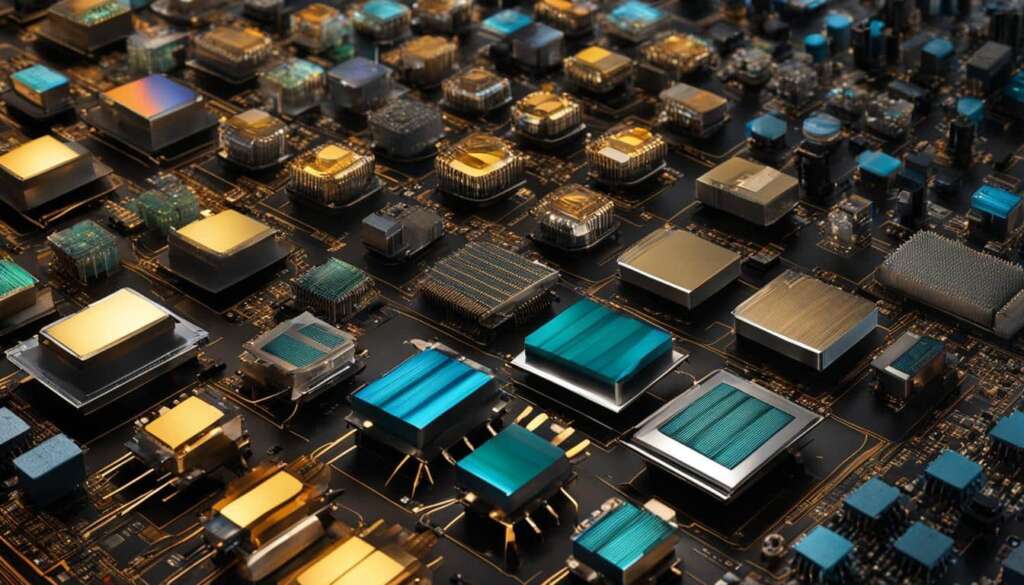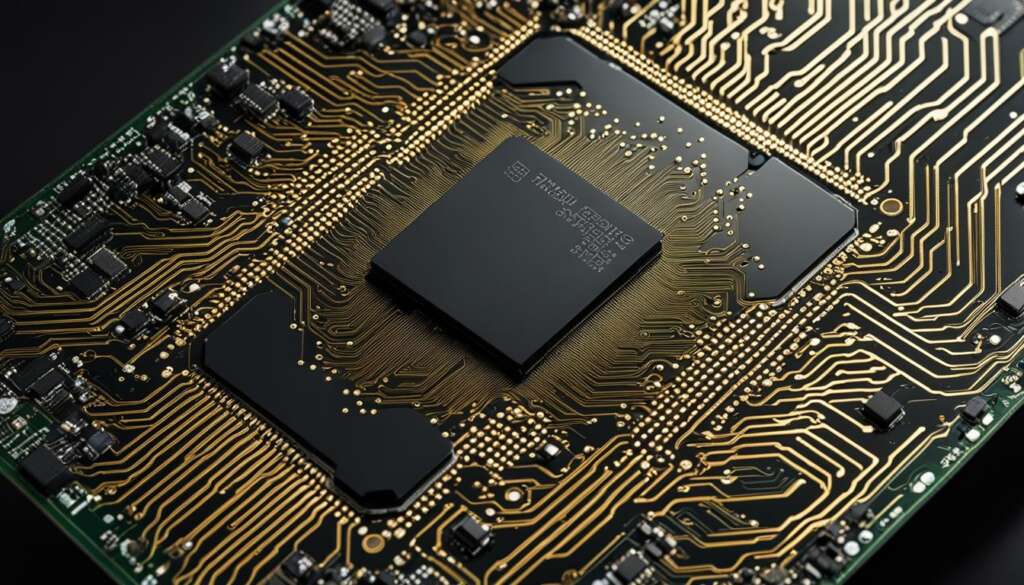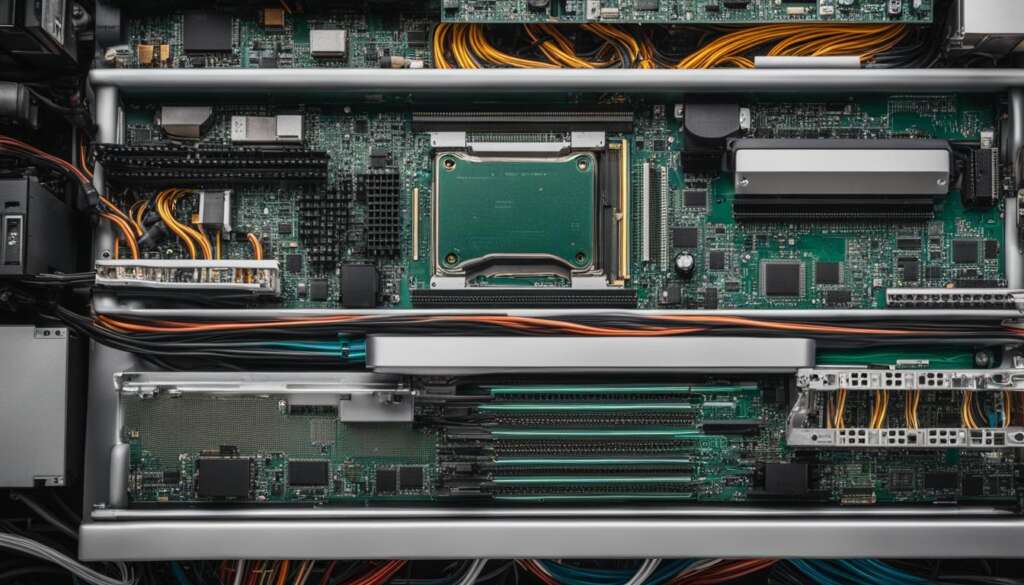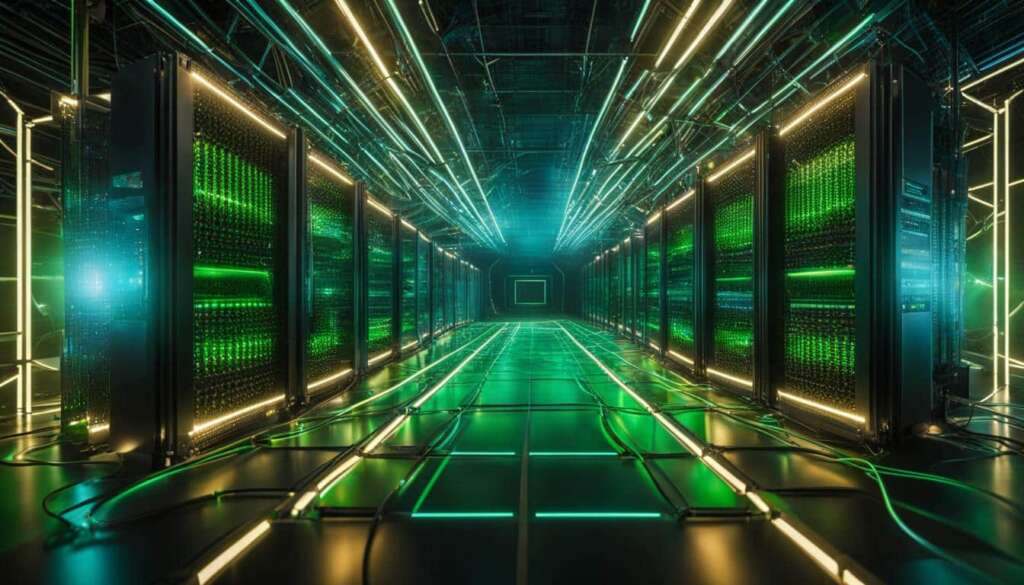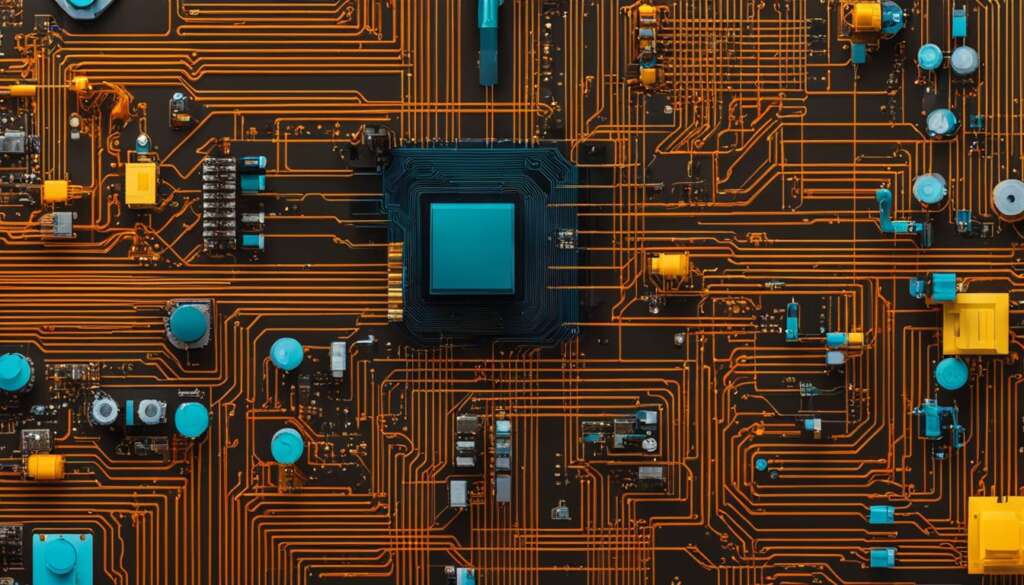Table of Contents
Processor Cooling Innovations have played a crucial role in the advancement of technology. As computing power has exponentially grown, the need for efficient cooling has become increasingly important. Innovations in processor cooling have paved the way for advanced cooling solutions, ensuring the efficient and reliable performance of processors.
With constant advancements in technology, state-of-the-art cooling innovations have emerged, enabling efficient processor cooling and ensuring the longevity of electronic devices. These cutting-edge cooling technologies have revolutionized the field of processor cooling, offering next-generation solutions that push the boundaries of what is possible.
From revolutionary cooling solutions to state-of-the-art techniques, innovations in processor cooling have reshaped the industry. These efficient cooling solutions have not only enhanced the performance of processors but also contributed to energy efficiency and reduced environmental impact.
Throughout this article, we will explore the evolution of processor cooling techniques, from the challenges faced by high-performance processors to the environmental impact of traditional cooling methods. We will delve into the advancements made in integrated cooling and the advantages they offer over traditional cooling techniques.
Join us as we uncover the future of processor cooling and the potential applications and implications these innovations hold. Discover how advanced cooling technologies are shaping the electronics industry and paving the way for more energy-efficient and sustainable solutions.
Cooling High-Performance Processors: Overcoming Challenges for Efficiency and Environmental Impact
With the exponential increase in computing power, the demand for high-performance processors has soared. However, this advancement comes with a significant challenge – the generation of excessive heat by microchips. As more transistors are packed onto a chip to enhance computing capabilities, the heat produced by the electricity passing through the processors escalates. This presents a major obstacle to maintaining the efficiency and performance of processors, as higher temperatures can lead to decreased efficiency and even chip failure.
Furthermore, the heat generated by high-performance processors contributes to their high energy consumption, particularly in data centers, which consume substantial amounts of electricity for cooling purposes. This not only impacts the operational costs but also raises concerns about the environmental sustainability of traditional cooling methods. The environmental impact extends to water consumption as well, where data centers require significant amounts of water for cooling, further exacerbating the ecological footprint of these facilities.
The challenges in cooling high-performance processors are twofold: ensuring efficient heat dissipation to maintain performance and reducing energy consumption and environmental impact. Innovative solutions are vital to tackle these challenges, leading to advancements in processor cooling techniques that prioritize both efficiency and sustainability. These advancements aim to revolutionize the field of processor cooling, enabling the development of next-generation processors that are not only powerful but also energy-efficient and environmentally friendly.
Table: Challenges of Processor Cooling
| Challenges | Impact |
|---|---|
| Heat generation from high-performance processors | Increased energy consumption and decreased processor efficiency |
| High energy consumption for cooling in data centers | Elevated operational costs and environmental impact |
| Water consumption for cooling | Additional strain on water resources and ecological footprint |
The Environmental Impact of Traditional Cooling Methods
Traditional cooling methods used in data centers have significant environmental impacts. These methods consume a large amount of electricity and water, contributing to increased greenhouse gas emissions and water usage. In fact, data centers currently consume approximately 1% of the world’s electricity, and the electricity and water consumption for cooling in the United Kingdom alone is equivalent to that of a small town. This raises concerns about the environmental sustainability of these cooling techniques.
Table 1 provides an overview of the environmental impact of traditional cooling methods:
| Environmental Impact | Description |
|---|---|
| High electricity consumption | Data centers consume a significant amount of electricity to power cooling systems, contributing to increased carbon emissions. |
| Water consumption | Cooling methods such as cooling towers and water-based cooling systems require a substantial amount of water, leading to water scarcity and increased environmental pressure. |
| Greenhouse gas emissions | The energy-intensive nature of traditional cooling methods results in higher greenhouse gas emissions, contributing to climate change. |
It is evident that the environmental impact of traditional cooling techniques is significant, highlighting the need for more sustainable alternatives.
Integrated Cooling: A New Approach
Traditional cooling methods used in data centers, such as metal sinks combined with fans, have significant environmental impacts. These methods consume a large amount of electricity and water, contributing to increased greenhouse gas emissions and water usage. Data centers currently consume approximately 1% of the world’s electricity, and the electricity and water consumption for cooling in the United States alone is equivalent to that of a whole city. This has raised concerns about the environmental sustainability of these cooling techniques.
Swiss researchers have developed a groundbreaking approach to processor cooling by integrating cooling elements throughout the chips themselves. They created microchannels within the semiconductors to allow fluid to flow and remove heat efficiently. This novel design eliminates the need to combine separate cooling systems with the chips and offers a more integrated and energy-efficient solution. This innovation has the potential to revolutionize processor cooling and increase energy efficiency in various electronic devices.
Integrated cooling technologies offer several advantages over traditional cooling methods. By eliminating the need for separate cooling systems, these innovations reduce energy consumption and heat buildup in chips. This not only enhances the efficiency and performance of processors but also enables further miniaturization of electronics. The integrated cooling approach has the potential to extend Moore’s Law, which predicts the doubling of transistors on integrated circuits every two years. Additionally, this technology has applications in various domains, including power converters for electric vehicles and solar inverters.
Advantages of Integrated Cooling Technologies:
- Reduced energy consumption
- Enhanced efficiency and performance of processors
- Potential for miniaturization of electronics
- Extended Moore’s Law
- Applications in power converters for electric vehicles and solar inverters
Table: Comparison of Traditional Cooling Methods and Integrated Cooling Technologies
| Traditional Cooling Methods | Integrated Cooling Technologies | |
|---|---|---|
| Energy Consumption | High | Reduced |
| Heat Buildup in Chips | High | Reduced |
| Efficiency and Performance | Lower | Enhanced |
| Potential for Miniaturization | Limited | Promising |
| Moore’s Law | Challenging to sustain | Potential for extension |
| Applications | Limited | Wide-ranging |
Advantages of Integrated Cooling Technologies
Integrated cooling technologies offer numerous advantages over traditional cooling methods. By eliminating the need for separate cooling systems, these innovations reduce energy consumption and heat buildup in chips, resulting in improved efficiency and performance. Additionally, integrated cooling enables further miniaturization of electronics, allowing for more compact and innovative designs. This advancement aligns with the extended Moore’s Law, which predicts the doubling of transistors on integrated circuits every two years. The reduction in energy consumption and heat generation also contributes to decreased environmental impact, making integrated cooling a more sustainable solution for the future.
One of the key advantages of integrated cooling is its ability to reduce heat in processors. By integrating cooling elements directly within the chips, heat dissipation is optimized, leading to lower operating temperatures. This not only enhances the efficiency and longevity of the processors but also ensures stable performance even under heavy workloads. Reduced heat generation also translates to decreased power consumption, contributing to overall energy efficiency of electronic devices.
Another significant advantage of integrated cooling is the potential for miniaturization of electronics. By eliminating the need for separate cooling systems, more space can be utilized for other components or functions, allowing for more compact and lightweight devices. This is particularly important in applications where size and weight restrictions are critical, such as portable electronics and IoT devices. Integrated cooling technologies enable the development of smaller, yet powerful, electronic devices that can be seamlessly integrated into various industries and everyday life.
| Advantages of Integrated Cooling Technologies |
|---|
| Reduced heat generation |
| Enhanced energy efficiency |
| Miniaturization of electronics |
| Extended Moore’s Law |
| Decreased energy consumption |
In summary, the advantages of integrated cooling technologies are numerous. These innovations provide improved energy efficiency, reduced heat generation, and enable miniaturization of electronics. By integrating cooling elements within chips, the efficiency and performance of processors are enhanced, while also contributing to decreased energy consumption and environmental impact. The future of processor cooling lies in the continuous development and adoption of integrated cooling technologies, bringing forth a new era of efficient and sustainable electronic devices.
Evolution of Cooling Techniques: From Air-Cooling to Liquid Cooling
As the demand for efficient processor cooling has increased over time, so has the evolution of cooling techniques. In the past, air-cooling using fans was the most common method employed to dissipate heat generated by microchips. However, with the advancements in technology and the growing power demands, more sophisticated cooling methods have emerged.
Heat sinks became prevalent as a means to transfer heat from the processor to the surrounding air, improving cooling efficiency. These heat sinks were designed with fins to increase the surface area for better heat dissipation. Additionally, heat pipes, which utilize hollow pipes filled with a working fluid, were introduced to further enhance heat transfer.
Heat pipes provide superior thermal conductivity and enable better heat dissipation compared to traditional finned radiators. They efficiently transfer heat from the processor to the cooling medium, contributing to improved cooling efficiency. The thermal performance of heat pipes can be further optimized by varying the pipe diameter and the number of heat pipes used.
| Evolution of Cooling Techniques | Advantages |
|---|---|
| Air-Cooling | – Simple and cost-effective – Widely available – Suitable for low-power applications |
| Heat Sinks | – Improved heat dissipation – Increased surface area for better cooling – Widely used |
| Heat Pipes | – Superior thermal conductivity – Better heat transfer efficiency – Optimal cooling performance |
| Liquid Cooling | – Superior heat dissipation – Lower thermal resistance – Enhanced cooling performance |
In recent years, liquid cooling systems have gained prominence as a more advanced cooling solution. Liquid cooling utilizes the higher thermal conductivity of water compared to air to reduce thermal resistance and provide better cooling performance. These systems use liquid-cooled heat exchangers to extract heat from the source and lower the air temperature. Liquid cooling not only offers improved cooling efficiency but also reduces power consumption and system noise, making it an attractive option for advanced cooling requirements.
Overall, the evolution of cooling techniques, from air-cooling to liquid cooling, has been driven by the need to efficiently dissipate the increasing heat generated by high-performance processors. By embracing these advancements, electronic devices can achieve enhanced cooling efficiency, improved performance, and increased energy efficiency.
The Role of Heat Pipes in Cooling Solutions
Heat pipes play a crucial role in modern cooling solutions. These innovative devices enhance heat transfer from the processor to the cooling medium, improving cooling efficiency and maintaining optimal operating temperatures. By utilizing the principles of thermodynamics, heat pipes are able to transfer heat with minimal temperature differences, ensuring effective cooling of high-performance processors.
One example of the role of heat pipes in cooling solutions is their integration into heat sinks, creating a heat pipe radiator. These radiators offer improved cooling efficiency compared to traditional finned radiators, as the heat pipes provide enhanced heat transfer capabilities. The thermal performance of heat pipe radiators can be further optimized by varying the pipe diameter and the number of heat pipes used, allowing for customized cooling solutions tailored to specific processor requirements.
| Advantages of Heat Pipes in Cooling Solutions |
|---|
| Enhanced heat transfer |
| Improved cooling efficiency |
| Reduced temperature differentials |
| Customizable design options |
With their ability to efficiently transport heat, heat pipes offer several advantages in cooling solutions. They enhance heat transfer from the processor to the cooling medium, reducing temperature differentials and maintaining optimal operating conditions. Additionally, heat pipes can be customized in terms of size, number, and arrangement to meet the specific cooling requirements of processors in different electronic devices.
“Heat pipes are a key component in modern cooling solutions, enabling efficient heat transfer and maintaining optimal processor temperatures. Their integration into heat sinks, such as heat pipe radiators, offers improved cooling efficiency and customizable design options for effective cooling of high-performance processors.” – Cooling Solutions Expert
Liquid Cooling Systems: A Promising Cooling Solution
Liquid cooling systems have emerged as a promising solution for high-performance processor cooling. These systems utilize liquid-cooled heat exchangers to extract heat from the source and reduce air temperature. Unlike traditional air-cooling methods, liquid cooling systems offer several advantages, including a significant reduction in thermal resistance and improved cooling performance.
One of the key benefits of liquid cooling systems is the high thermal conductivity of water compared to air. This property allows for more efficient heat transfer, resulting in lower operating temperatures for processors. By efficiently dissipating heat, liquid cooling systems can enhance the performance and longevity of processors, enabling them to operate at their full potential without the risk of thermal throttling or overheating.
Moreover, liquid cooling systems offer advantages over air-cooling in terms of energy consumption and system noise. By using liquid-cooled heat exchangers, these systems can achieve higher levels of thermal efficiency, leading to reduced power consumption and quieter operation. This makes liquid cooling an attractive option for advanced cooling requirements in high-performance computing and other electronic devices.
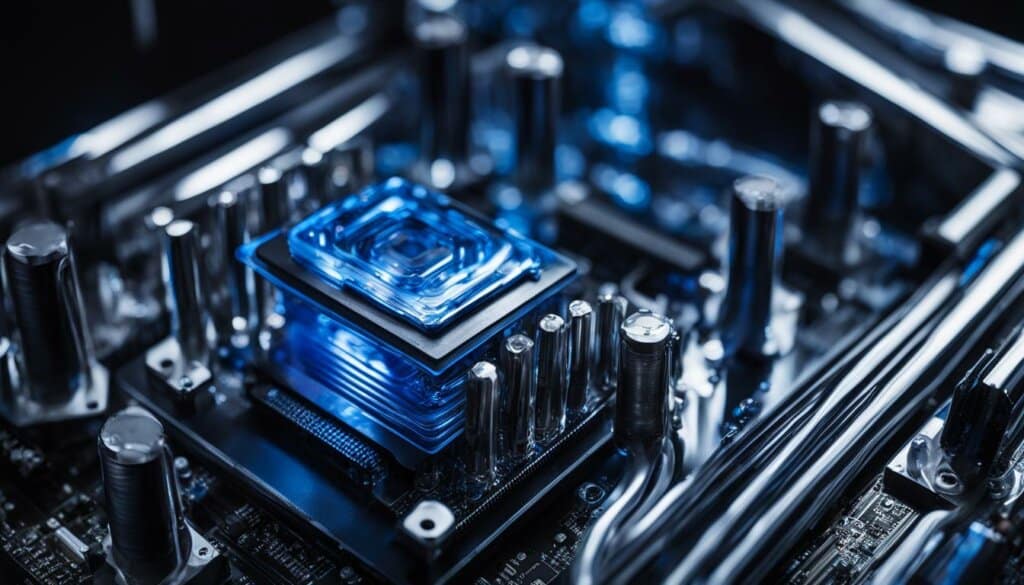
Overall, liquid cooling systems provide a promising solution for efficient processor cooling. With their superior thermal conductivity and reduced thermal resistance, these systems offer improved performance and energy efficiency compared to traditional air-cooling methods. As technology continues to advance, liquid cooling systems are likely to play a significant role in the future of processor cooling.
Advanced Liquid Cooling Technologies
The evolution of processor cooling techniques has brought forth advanced liquid cooling technologies that offer enhanced efficiency and performance. These innovations are paving the way for more effective cooling solutions in the realm of electronic devices.
The Role of Active Liquid Heat Sinks
One notable advancement is the development of active liquid heat sinks. These cutting-edge solutions combine the benefits of liquid cooling with the integration of a fan for improved heat dissipation. The active liquid heat sinks effectively remove heat from the processor, keeping it at optimal temperatures for enhanced performance and longevity.
Liquid Immersion for Superior Cooling
Liquid immersion is another emerging technology that holds great promise in the field of cooling. With this technique, computer components are submerged in a dielectric liquid, providing superior cooling capabilities. This innovative approach offers efficient heat dissipation and helps maintain low operating temperatures, ensuring optimal performance even under heavy workloads.
Thermoelectric Cooling: A Groundbreaking Solution
Thermoelectric cooling is yet another groundbreaking technology that is revolutionizing processor cooling. By utilizing the Peltier effect, thermoelectric cooling transfers heat from one side of the device to the other, effectively regulating the temperature and keeping the processor within designated parameters. This innovative method offers precise control over cooling and has the potential to significantly improve the efficiency and reliability of electronic devices.
With the introduction of these advanced liquid cooling technologies, the future of processor cooling looks bright. These innovations provide more efficient and effective cooling solutions, enabling electronic devices to operate at optimal temperatures for extended periods. As technology continues to advance, these cutting-edge cooling technologies will play a crucial role in ensuring the performance and longevity of electronic devices.
| Advanced Liquid Cooling Technologies | Features |
|---|---|
| Active Liquid Heat Sinks | Combines liquid cooling with integrated fan for improved heat dissipation |
| Liquid Immersion | Submerges computer components in dielectric liquid for superior cooling capabilities |
| Thermoelectric Cooling | Utilizes the Peltier effect to transfer heat and regulate temperature |
The Future of Processor Cooling
The field of processor cooling is constantly evolving, driven by the need for enhanced energy efficiency and performance in electronic devices. Researchers and engineers are continuously working on further advancements in cooling technologies to overcome the challenges posed by increasing heat generation. The integration of cooling elements within chips, along with advancements in liquid cooling techniques, holds great potential for the future of processor cooling. These innovations will not only improve the efficiency and longevity of processors but also contribute to the development of more sustainable and energy-efficient electronic devices.
Continuous innovation is key to unlocking the full potential of processor cooling. As technology evolves, new cooling solutions will continue to be developed, pushing the boundaries of what is possible. The future holds the promise of further advancements in cooling techniques, allowing for even more efficient heat dissipation and cooling performance. These advancements will not only benefit the performance of processors but also have ripple effects in other industries where heat management is crucial, such as power converters for electric cars and solar inverters for renewable energy systems.
“The future of processor cooling lies in the continuous pursuit of innovation. As processors become more powerful and generate more heat, there is a growing need for advanced cooling solutions that can effectively manage the thermal challenges. Further advancements in integrated cooling technologies and liquid cooling systems will play a vital role in ensuring energy efficiency and maintaining optimal performance.” – Dr. James Thompson, Cooling Systems Expert
Enhanced energy efficiency is a primary focus of future processor cooling technologies. As electronic devices become more energy-intensive and power-hungry, efficient cooling becomes essential to reduce power consumption and extend battery life. The integration of cutting-edge cooling solutions directly into the chips themselves will enable more efficient heat dissipation, resulting in improved energy efficiency and performance.
| Advancements | Benefits |
|---|---|
| Integration of cooling elements within chips | Improved energy efficiency |
| Advancements in liquid cooling techniques | Enhanced heat dissipation |
| Miniaturization of cooling components | Increased performance |
In conclusion, the future of processor cooling is filled with continuous innovation and further advancements. The integration of cooling elements within chips and advancements in liquid cooling techniques will pave the way for enhanced energy efficiency and optimal performance. As technology continues to evolve, the development of sustainable and energy-efficient cooling solutions will play a crucial role in shaping the future of electronic devices.
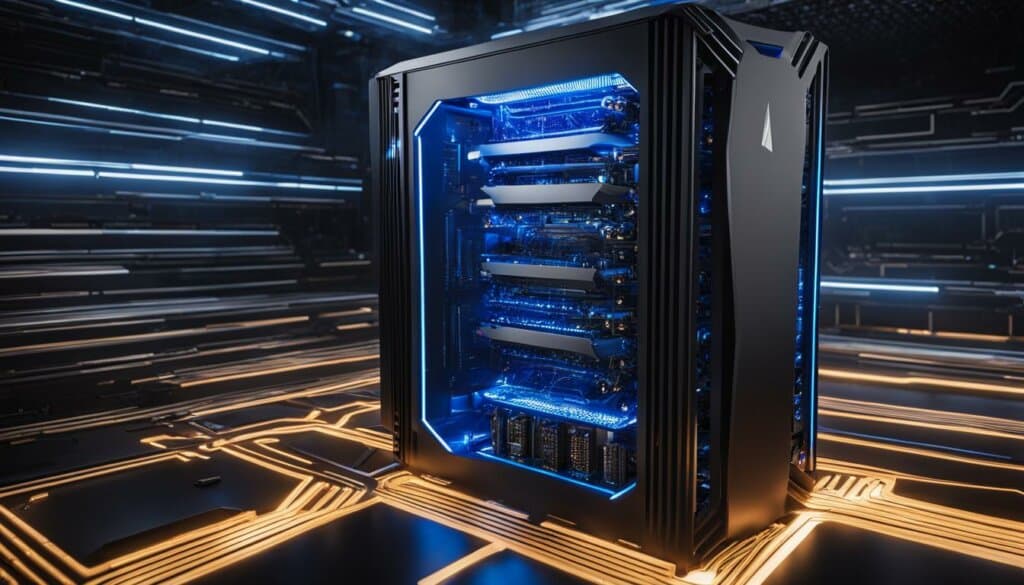
Potential Applications and Implications
The innovative cooling technologies developed for processors have wide-ranging potential applications. They can be utilized in power converters for electric cars, solar inverters for solar panels, and various other electronic devices. By minimizing heat generation and increasing energy efficiency, these cooling innovations can significantly reduce energy consumption and the environmental impact of electronic devices.
Power converters are essential components in electric cars, converting the direct current (DC) from the battery to alternating current (AC) for the motor. These converters often generate significant heat, which can impact their efficiency and lifespan. By integrating advanced cooling solutions into power converters, the temperature can be effectively managed, improving overall performance and extending the lifespan of the converters.
Solar panels are another area where cooling innovations can have a significant impact. As solar panels absorb sunlight and convert it into electricity, they generate heat. This heat can reduce the efficiency of the solar panels, resulting in decreased energy production. By implementing efficient cooling techniques, such as integrated cooling with microchannels, the heat generated by the solar panels can be dissipated effectively, improving their performance and increasing energy production.
In addition to power converters and solar panels, the potential applications of cooling innovations extend to various other electronic devices. By reducing heat generation and improving energy efficiency, these innovations can contribute to the development of more sustainable technologies, reducing energy consumption and minimizing the environmental impact of electronic devices.
| Potential Applications of Cooling Innovations | Benefit |
|---|---|
| Power Converters for Electric Cars | Improved efficiency and extended lifespan of power converters |
| Solar Inverters for Solar Panels | Enhanced performance and increased energy production of solar panels |
| Various Electronic Devices | Reduced energy consumption and environmental impact |
By integrating advanced cooling technologies in power converters, solar inverters, and other electronic devices, we can create more energy-efficient and sustainable solutions. These innovations have the potential to drive advancements in various industries, contributing to a greener future and a more sustainable planet.
Conclusion
The advancements in processor cooling technologies have brought about a significant transformation in the efficiency and sustainability of electronic devices. The integration of cooling elements within chips, combined with the development of innovative liquid cooling techniques, has paved the way for energy-efficient solutions in the face of increasing heat generation.
By adopting these innovations, we can overcome the challenges posed by excessive heat and ensure the longevity and optimal performance of processors. These cutting-edge cooling technologies have the potential to revolutionize various applications, including electric vehicles and renewable energy systems, by reducing energy consumption and minimizing environmental impact.
As we embrace these energy-efficient solutions, we contribute to the development of a greener future. The continuous evolution in processor cooling technologies holds immense promise for the advancement of sustainable technologies and the creation of a more environmentally conscious world.
FAQ
What are the challenges of cooling high-performance processors?
High-performance processors generate a significant amount of heat, which can affect their efficiency and performance. Maintaining optimal temperatures is crucial to prevent decreased efficiency and failure of the chips.
What is the environmental impact of traditional cooling methods?
Traditional cooling methods, such as air-cooling with fans, consume a large amount of electricity and water. This results in increased greenhouse gas emissions and water usage, raising concerns about environmental sustainability.
How does integrated cooling offer a new approach?
Integrated cooling involves integrating cooling elements within chips, using microchannels for fluid cooling. This eliminates the need for separate cooling systems and offers a more energy-efficient solution.
What are the advantages of integrated cooling technologies?
Integrated cooling technologies reduce energy consumption, minimize heat buildup, and enhance the efficiency and performance of processors. They also enable further miniaturization of electronics and have the potential to extend Moore’s Law.
How have cooling techniques evolved over time?
Cooling techniques have evolved from simple air-cooling with fans to more advanced methods, including heat sinks, heat pipes, and liquid cooling systems. These advancements have improved cooling efficiency and thermal performance.
What is the role of heat pipes in cooling solutions?
Heat pipes enhance heat transfer from the processor to the cooling medium. They can be integrated into heat sinks, creating a heat pipe radiator that offers improved cooling efficiency compared to traditional finned radiators.
How do liquid cooling systems provide a promising solution?
Liquid cooling systems use liquid-cooled heat exchangers to reduce air temperature and provide superior thermal conductivity. They offer better cooling performance, lower power consumption, and reduced system noise compared to air-cooling.
What are some advanced liquid cooling technologies?
Advanced liquid cooling technologies include active liquid heat sinks, which combine liquid cooling with integrated fans, and liquid immersion, where components are submerged in a dielectric liquid. Thermoelectric cooling, utilizing the Peltier effect, is also a promising solution.
What does the future hold for processor cooling?
Continuous innovation in cooling technologies is expected to further enhance energy efficiency and performance. Advancements in integrated cooling and liquid cooling techniques will drive the development of more efficient and sustainable electronic devices.
What are the potential applications and implications of cooling innovations?
Cooling innovations have potential applications in power converters for electric cars, solar inverters for solar panels, and other electronic devices. They can significantly reduce energy consumption and contribute to a greener future.
Is there a conclusion to this article?
No, the article provides an overview of innovations and advancements in processor cooling technologies, highlighting their importance for efficiency, performance, and sustainability.

